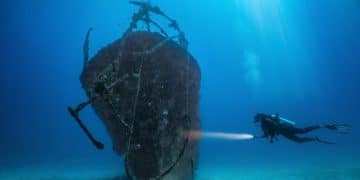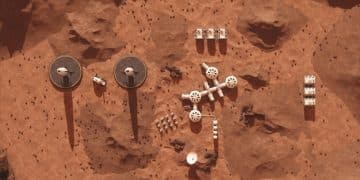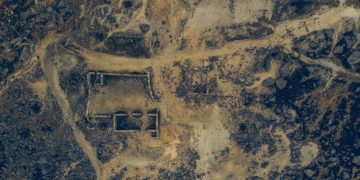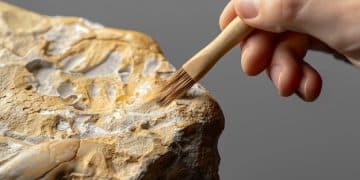3D Scanning Revolutionizes Archaeology in 2025: Unearthing America’s Past
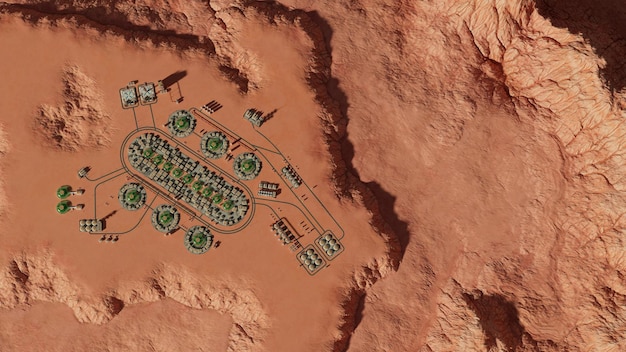
New 3D scanning technology is poised to revolutionize archaeological digs in the United States by 2025, offering unprecedented data capture, preservation capabilities, and accessibility for researchers and the public alike, transforming how we understand and preserve America’s historical sites.
In the dynamic realm of archaeology, where the past is meticulously unearthed and interpreted, innovation continually reshapes how discoveries are made and understood. By 2025, the application of new 3D scanning technology is revolutionizing archaeological digs in 2025 across the United States, promising a transformative leap forward in how America’s rich historical tapestry is explored, documented, and preserved for future generations.
The Dawn of Digital Archaeology: A New Paradigm
The traditional archaeological dig, while foundational to our understanding of the past, often involves destructive processes. Excavation, by its very nature, alters the site. Once a layer is removed, it cannot be perfectly restored for future study. This inherent challenge has long spurred archaeologists to seek methods that improve documentation and minimize impact.
Modern advancements in digital capture technologies, particularly those in 3D scanning, are providing compelling solutions. These tools allow for the creation of incredibly detailed digital replicas of sites and artifacts, capturing spatial data with precision previously unimaginable. This shift is not merely about better photographs; it’s about creating an entire digital ecosystem of archaeological information.
The transition to a more digitally integrated approach marks a new era in the field. This evolution impacts everything from initial site surveys to the long-term preservation and analysis of finds.
Enhanced Site Survey and Mapping
One of the most immediate benefits of 3D scanning in archaeology is its profound impact on initial site surveys. Technologies like LiDAR (Light Detection and Ranging) from drones or terrestrial scanners can map vast areas quickly and accurately.
- Topographical Detail: LiDAR penetrates dense vegetation, revealing subtle landscape features that might indicate ancient structures, roads, or agricultural systems hidden beneath.
- Pre-Excavation Planning: High-resolution 3D models provide an unparalleled understanding of site topography, allowing archaeologists to strategically plan excavations, direct resources efficiently, and anticipate potential challenges.
- Environmental Context: The precise spatial data gathered helps reconstruct the ancient environment, offering insights into human interaction with the landscape over time.
This comprehensive pre-excavation understanding not only saves time and resources but also significantly enhances the scientific rigor of the entire project. The ability to visualize the site in three dimensions before any earth is moved offers a critical advantage.
Precision in Excavation Documentation
During the excavation phase itself, 3D scanning transforms documentation practices. Instead of relying solely on photographs, drawings, and written descriptions, archaeologists can now capture the entire stratigraphic sequence and individual finds in three dimensions.
Portable handheld 3D scanners, for instance, can quickly and accurately capture the exact position and form of artifacts in situ, before they are even removed. This creates an unshakeable digital record that preserves contextual information, which is often lost or compromised during traditional removal processes. This aspect is crucial for maintaining the integrity of archaeological findings.
As layers are excavated, repeated scans can build a comprehensive 3D model of the entire site, layer by layer, providing an invaluable record of the excavation process itself. This layered digital archive enables researchers to revisit and virtually re-excavate the site at any time, years or even decades later, with all the original spatial context intact.
Unlocking Hidden Histories: Artifact Analysis and Conservation
Beyond the excavation site, 3D scanning profoundly impacts how artifacts are analyzed, conserved, and shared. The digital replicas created through scanning offer unique opportunities for non-destructive examination and broader accessibility.
Artifacts, by their very nature, are fragile and susceptible to damage from handling and environmental factors. Traditional analysis often involves physical manipulation, which carries inherit risks. 3D scanning mitigates these risks substantially.
Detailed Artifact Examination
Once scanned, an artifact’s digital model can be manipulated, rotated, and examined from any angle on a computer screen. This allows for detailed study without physically touching the object. Researchers can zoom in to microscopic levels, analyze surface textures, and even virtually reconstruct broken pieces, all within a digital environment.
- Material Analysis: High-resolution scans can reveal clues about manufacturing techniques, wear patterns, and even microscopic traces of organic materials that might go unnoticed with visual inspection alone.
- Virtual Reconstruction: Fragmented artifacts, such as pottery or bone, can be digitally reassembled with precision. This not only aids in understanding the object’s original form but also informs physical conservation efforts.
- Comparative Studies: Digital models facilitate easy comparison between artifacts from different sites or collections, advancing broader archaeological theories and understandings of cultural connections.
This level of detailed, non-invasive examination opens new avenues for research, allowing archaeologists to extract far more information from their finds than ever before.
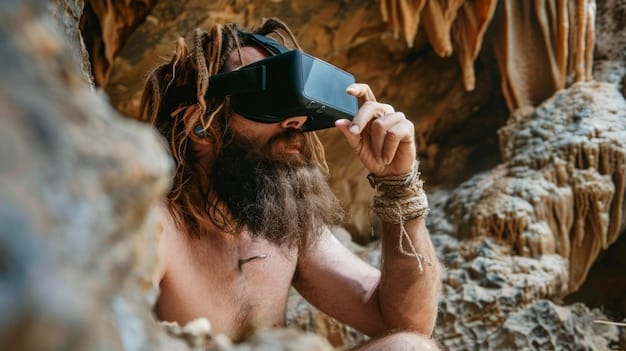
Enhanced Conservation and Preservation
The true value of 3D scanning in conservation lies in its ability to create permanent, accessible records of artifacts. Analog records can degrade, be lost, or suffer damage. Digital models, however, can be backed up, stored in multiple locations, and easily reproduced without risking the original object.
For fragile artifacts, a 3D scan becomes a vital “digital twin.” This twin can be used for display, educational purposes, and even for creating replicas through 3D printing, greatly reducing the need for constant handling of the original. This is particularly important for unique or highly delicate items that are rarely exhibited to the public.
Furthermore, 3D scanning can document the condition of an artifact over time, providing precise data for monitoring decay or changes. This detailed record is invaluable for developing targeted conservation strategies and ensuring the longevity of precious historical objects.
The technology offers a proactive approach to preservation, safeguarding our shared heritage against the ravages of time and human activity.
Accessibility and Public Engagement: Bridging the Past and Present
One of the most exciting aspects of 3D scanning technology in archaeology is its potential to democratize access to archaeological discoveries. Historically, access to artifacts and excavation sites has been limited to a select group of researchers and students. Digital models change this dynamic entirely.
By creating virtual replicas, archaeological sites and artifacts can be shared with a global audience, regardless of geographical location or physical limitations. This fosters a deeper connection between the public and their shared heritage, making archaeological science more engaging and accessible.
Virtual Exhibitions and Online Repositories
Museums and educational institutions are increasingly leveraging 3D models to create immersive virtual exhibitions. Visitors can explore sites, manipulate artifacts, and learn about historical contexts from the comfort of their homes. This expands the reach of archaeological knowledge beyond traditional museum walls.
Online repositories for 3D archaeological data are also emerging, providing open access to vast collections of scanned artifacts and site models. These platforms serve as invaluable resources for researchers, educators, and enthusiasts worldwide, facilitating collaborative research and interdisciplinary studies.
This open-access approach aligns with the growing trend of digital humanities, promoting transparency and broader participation in scientific discovery.
Educational Outreach and STEM Integration
3D models are powerful educational tools. They allow students to interact with historical objects in ways that textbooks or flat images simply cannot replicate. Schools can download and 3D print replicas of artifacts for hands-on learning experiences, bringing history to life in the classroom.
- Interactive Learning: Students can virtually excavate a site, analyze stratigraphy, and classify artifacts using interactive 3D simulations, fostering a deeper understanding of archaeological methodologies.
- Cross-Curricular Applications: The technology integrates well with STEM education, teaching concepts in engineering, data science, and geology through the lens of archaeological discovery.
- Inspiring Future Archaeologists: Engaging with cutting-edge technology helps generate interest in archaeology and related fields among younger generations, ensuring the continuity of the discipline.
By making the past tangible and interactive, 3D scanning technology offers an unparalleled opportunity for public education and engagement.
Challenges and Future Directions for 2025
While the promise of 3D scanning in archaeology is immense, its widespread adoption and full potential are still evolving. Several challenges must be addressed for these technologies to truly revolutionize the field by 2025 and beyond.
The rapidly advancing nature of technology also means that archaeologists must continually adapt their skill sets and methodologies. The learning curve for operating complex 3D scanning equipment and processing the massive datasets it generates can be steep.
Addressing Technical and Financial Hurdles
The initial investment in high-quality 3D scanning equipment, software, and the necessary computing infrastructure can be substantial. This can be a barrier for smaller institutions or independent research projects. Furthermore, the specialized skills required to operate and maintain this technology are not yet universally available within the archaeological community.
- Cost of Equipment: Professional-grade LiDAR and structured-light scanners are expensive, limiting their accessibility.
- Data Storage and Processing: 3D scans generate immense amounts of data, requiring significant storage capacity and powerful computing resources for processing and analysis.
- Software Compatibility: Ensuring interoperability between different scanning systems and archaeological databases remains a challenge.
Solutions may involve partnerships with technology companies, increased funding for archaeological tech adoption, and the development of more affordable, user-friendly scanning solutions.
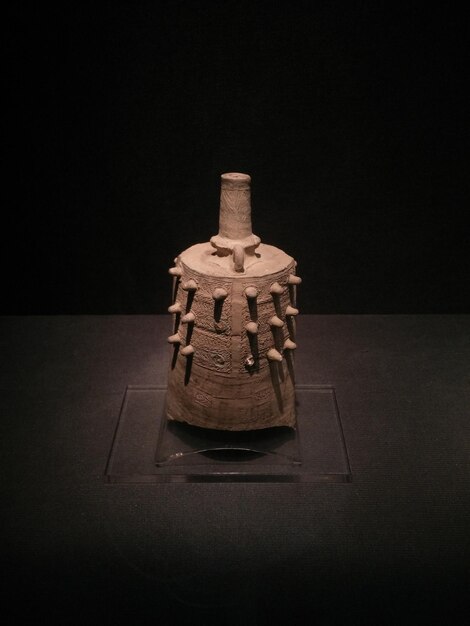
Data Standards and Long-Term Archiving
The proliferation of 3D archaeological data necessitates the development of robust data standards and long-term archiving strategies. Without standardized formats and protocols, the vast amounts of digital information generated could become incompatible or inaccessible over time, defeating the purpose of preservation.
Archaeological institutions are working on establishing best practices for data capture, metadata creation, and digital curation. This includes developing centralized repositories and guidelines for data interoperability, ensuring that future generations of researchers can access and utilize these valuable digital assets.
The commitment to thoughtful data management is as critical as the scanning itself. The goal is not just to capture data, but to ensure its enduring utility.
Ethical Considerations and Responsible Use
As with any powerful technology, 3D scanning in archaeology raises important ethical considerations. Issues such as intellectual property rights for scanned artifacts, access to sensitive indigenous cultural heritage sites, and the potential for misinterpretation of digital models require careful consideration.
Archaeologists must engage in discussions with source communities, ensure proper attribution, and maintain responsible data dissemination practices. The digital revolution in archaeology must be guided by principles of respect, collaboration, and ethical stewardship of the past.
Navigating these complexities will be key to the responsible and beneficial integration of 3D scanning into archaeological practice.
Impact on American Archaeology in 2025
By 2025, 3D scanning technology is expected to have permeated various facets of American archaeology, from university research to federal cultural resource management projects. Its influence will be seen in faster, more comprehensive site documentation and a greater public appreciation for historical assets.
The widespread adoption of this technology will redefine what it means to conduct an archaeological dig in the United States, pushing the boundaries of discovery and preservation.
Revolutionizing Cultural Resource Management
In the United States, Cultural Resource Management (CRM) archaeology accounts for a significant portion of archaeological fieldwork. 3D scanning offers CRM firms unparalleled efficiency and precision in complying with federal and state preservation laws, such as the National Historic Preservation Act.
Rapid site documentation, accurate impact assessments, and detailed digital records make the CRM process more streamlined and comprehensive. This means better protection for archaeological sites threatened by development, ensuring that our nation’s heritage is identified and preserved more effectively.
The technology enables faster data collection in the field, minimizing delays on construction projects while maximizing archaeological data recovery. This contributes significantly to public and private sector projects.
New Discoveries and Interpretations of American History
The enhanced ability to map, document, and analyze sites and artifacts through 3D scanning is already leading to, and will continue to foster, new discoveries and interpretations of American history. Hidden features beneath the landscape, previously overlooked details on artifacts, and more precise spatial relationships within sites are being revealed.
This deeper understanding can lead to revised narratives about indigenous populations, early European settlements, and historical industrial sites. For example, 3D LiDAR is already helping researchers uncover unknown Mesoamerican landscapes in the American Southwest or trace hidden paths of early colonial settlers in the Northeast.
These technological advancements are not just about finding more; they are about understanding better. They allow archaeologists to paint a richer, more accurate picture of America’s multifaceted past.
Bridging Disciplinary Gaps
The interdisciplinary nature of 3D scanning technology fosters collaboration between archaeology and other scientific fields, including computer science, engineering, geology, and environmental studies. This cross-pollination of ideas and techniques enriches archaeological research and broadens its impact.
For instance, geological data from 3D scans can inform climate change studies, while engineering principles might be applied to reconstruct ancient structures virtually. This integrated approach ensures that archaeological insights are more robust and relevant to a wider range of contemporary issues.
The future of archaeology, deeply intertwined with advanced digital tools, promises to be more collaborative and impactful than ever before.
| Key Point | Brief Description |
|---|---|
| 🚀 Digital Transformation | 3D scanning enables non-destructive, highly precise digital capture of archaeological sites and artifacts, forming permanent records. |
| 🔍 Enhanced Analysis | Provides unprecedented detail for artifact examination, virtual reconstruction, and comparative studies without physical handling. |
| 🌐 Greater Accessibility | Virtual models democratize access to discoveries for global public, educational institutions, and remote researchers. |
| 🌱 Ethical Considerations | Requires careful navigation of intellectual property, cultural heritage, and responsible data usage. |
Frequently Asked Questions About 3D Scanning in Archaeology
▼
3D scanning technology in archaeology is primarily used to create precise digital models of excavation sites, artifacts, and structures. This allows for detailed documentation before, during, and after excavation. It aids in mapping, analysis, conservation, and making discoveries accessible to a broader audience without physically disturbing fragile historical items.
▼
3D scanning significantly enhances preservation by creating non-destructive, permanent digital replicas. These “digital twins” can be archived, studied, and shared without handling the original, fragile artifacts. It also helps monitor the degradation of items over time and can be used to create physical replicas for educational or exhibition purposes, reducing wear on actual historical objects.
▼
No, 3D scanning is not replacing traditional archaeological methods but rather complementing and enhancing them. It provides an additional layer of accurate, comprehensive data capture that traditional methods cannot achieve on their own. While excavation is still necessary, 3D scanning offers unparalleled documentation and analysis tools, making digs more efficient and informative without negating core archaeological practices.
▼
3D scanning vastly improves public access by allowing for virtual exhibitions and online repositories of archaeological sites and artifacts. This means anyone, anywhere, can explore historical discoveries without needing to visit a physical museum or dig site. It democratizes knowledge, makes learning more interactive, and engages new audiences with cultural heritage. It also supports educational outreach programs effectively.
▼
The main challenges for widespread adoption include the high cost of advanced scanning equipment and software, the immense data storage and processing requirements, and the need for specialized training among archaeologists. Additionally, developing universal data standards and addressing ethical considerations related to digital ownership and cultural heritage require ongoing attention and collaborative efforts within the field.
Conclusion
The trajectory of archaeology in the United States, particularly by 2025, is unequivocally shaped by the profound impact of 3D scanning technology. This innovation is not merely an incremental improvement; it represents a paradigm shift, transforming how archaeological fieldwork is conducted, how artifacts are analyzed, and how America’s rich historical narrative is shared with the world. From the initial survey of a site to the long-term preservation of its treasures, 3D scanning offers unprecedented levels of precision, non-destructive analysis, and accessibility. While challenges remain in terms of cost, data management, and ethical considerations, the benefits far outweigh the hurdles, ensuring a future where the past is not just unearthed, but meticulously preserved and made vibrant through digital means for generations to come, truly revolutionizing our connection to “Unearthing America’s Past.”
